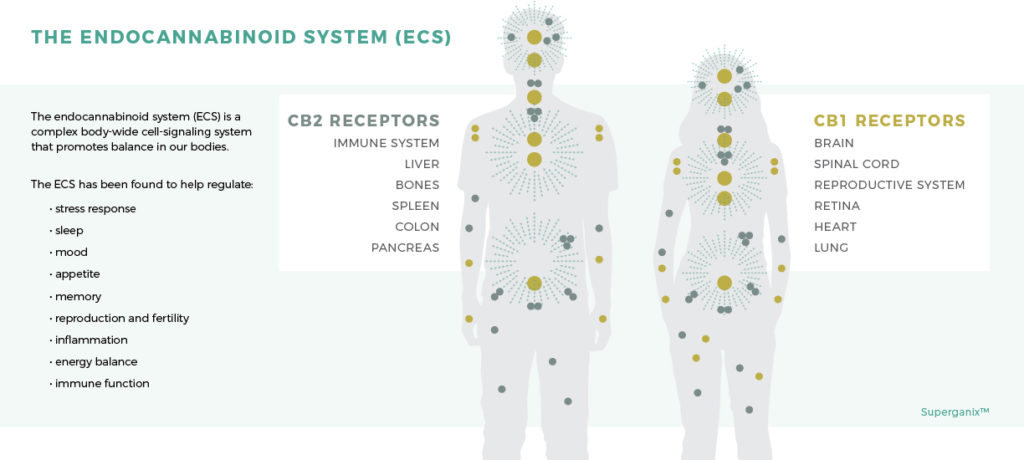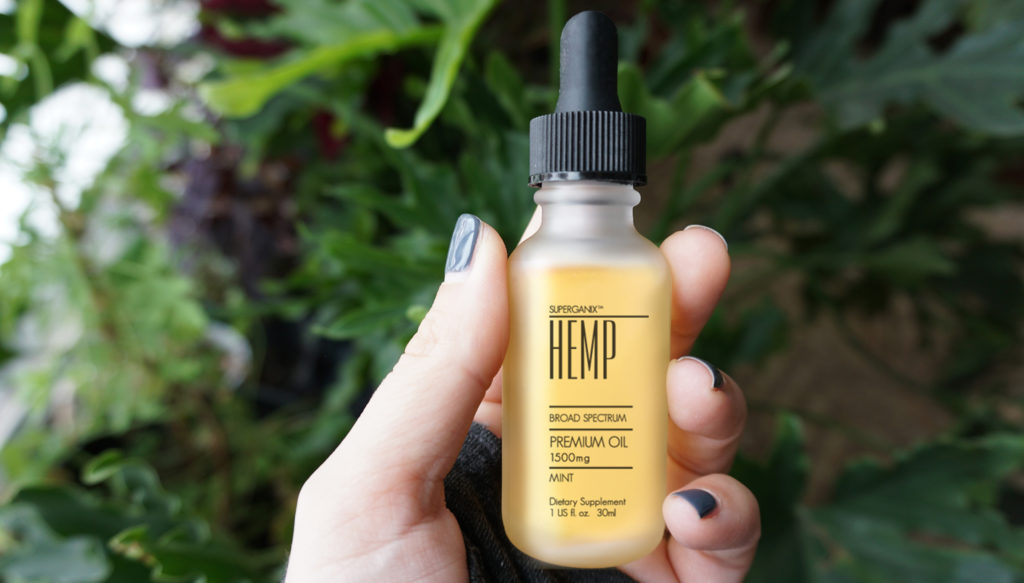CBD vs CBN vs CBG vs CBC
Chances are that by now you’ve seen some kind of health product with CBD on the label. It’s exploded on the supplement scene lately and is in everything from pain relievers to protein powder.
What you might not know is that CBD is just one of many chemical compounds known as cannabinoids that come from the cannabis plant. THC is another. In this post, we’re going to break down the following: CBD, CBN, CBG, and CBC to show you the wide-spanning potential applications for their usage.
Let’s dive in with a quick overview of what exactly cannabinoids are..
What Are Cannabinoids?
A cannabinoid is actually a blanket term for a group of more than 100 different chemical compounds that interact with cannabinoid receptors in the human body. Cannabinoids are secreted by the cannabis flowers from the plant. It is actually these cannabinoids that give cannabis the medicinal and recreational properties that have made it popular.
Research is ongoing to determine why cannabinoids produce calming, pain-relieving, and anti-inflammatory effects. We do, however, know how the process works.
Studies show that cannabinoids interact with proteins and cells in the brain in the
endocannabinoid system (ECS). The ECS naturally produces endocannabinoids in our bodies.
Endocannabinoids are lipid-based retrograde neurotransmitters that bind to cannabinoid receptors throughout the central nervous system. When endocannabinoids bind to these receptors (most commonly the CB1 and CB2 receptors) they can mediate physiological processes like pain, nausea, appetite, mood, anxiety, inflammation, sleep by regulating our circadian rhythms, and even memory.

Cannabinoids that come from the cannabis plant imitate the feelings that our endocannabinoids naturally produce. That’s how cannabinoid supplements produce therapeutic benefits users enjoy and can fill gaps where our natural production is lacking and balance out our ECS.
To activate our CB1 and CB2 receptors, the cannabinoids can be smoked, vaped, ingested, or applied topically as a cream and absorbed. What effects a user feels will depend on the specific cannabinoid they consume and which receptor the cannabinoid binds to.
Some cannabinoids, like THC, bind to receptors in the brain, while others, such as CBN, will bind to CB2 receptors found throughout our body. This is why different cannabinoid products will offer specific types of relief. More products and treatments will become available as more is learned about each of them, but for now, here is a brief overview of what we know to help you differentiate between four of the most studied cannabinoids: CBD, CBN, CBG, and CBC.

CBD – Cannabidiol
The second most common and popular cannabinoid (behind THC) is cannabidiol or CBD.
CBD has numerous potential health uses and has been used to:
• relieve chronic pain
• treat anxiety
• moderate mood swings
• help control the frequency of seizures
• as an antidepressant
• as a sleep aid
• to fight cancer tumors and treat the side effects associated with cancer
• to treat symptoms of Alzheimer’s and Parkinson’s disease
• relief from vomiting and nausea
Unlike THC, which is the cannabinoid that produces marijuana’s signature “high,” CBD is non-psychoactive, meaning it does not produce a high. CBD actually actively prevents THC from binding with our CB1 receptors, which is why certain strains of marijuana are more potent than others. Instead of getting high, CBD users experience a calming sensation. CBD is derived from CBDa, and converts to CBD at around 245 degrees Fahrenheit.
The quantity of CBD and THC in a cannabis plant are inversely related, meaning that plants high in THC will be low in CBD, and vice versa. This allows hemp farmers to breed plants that are high in CBD and low in THC, while marijuana farmers can do the opposite.

CBD’s vast potential has created a boom in recent years. A recent poll by Gallup showed that roughly 14 percent of Americans use CBD supplements. It is more popular with young people, but over eight percent of people over 65 have tried CBD as well, according to the same poll.
CBD’s recent boom is thanks in big part to an amendment to the 2018 Farm Bill that removed CBD and hemp from the list of “scheduled” drugs that are outlawed by the Controlled Substances Act. This amendment declared that hemp-derived CBD is not an illegal drug and made CBD supplements that come from industrial hemp legal in all 50 states.
While these supplements are indeed legal, the FDA has placed strict limitations on CBD products and how they can be marketed. But in spite of these restrictions, CBD products are everywhere.
Since CBD oil is extracted from hemp plants, it is often referred to as CBD hemp oil. CBD oil can be extracted from both marijuana and hemp plants but you need a medical license to buy CBD that comes from a marijuana plant as it is then considered a marijuana product. Hemp CBD oil products are available on the market for anyone, license free, such as the Hemp tinctures offered by Superganix™ .
CBN – Cannabinol
This is where things start to get a bit more complicated. You’ve likely heard of CBD, but what is CBN?
CBN, or cannabinol, is produced by aged THC. When THC is exposed to air and light over time, it oxidizes and forms CBN. Previously, CBN was believed to be a waste byproduct of the plant unworthy of further examination until a study revealed its potential as a powerful sedative.
CBN is slightly more psychoactive than CBD, but is still much less psychoactive than THC. CBN primarily binds to the CB2 receptor but may also interact with the CB1 receptor.

CBN is actually thought to be the most powerful sedative cannabinoid, which is why it is most often seen in sleep aid products to help treat insomnia. CBN is also considered to be a powerful anti-inflammatory that can be used to treat pain.
Other research shows that CBN can boost appetite and help our bones heal. Even more exciting is the ongoing research into CBN on its potential to stop the growth of cancer cells. CBN has been found to work together with other cannabinoids to cease the growth of a specific form of lung tumor called Lewis lung carcinoma. It may even help to treat glaucoma.
Now that you’ve gotten familiar with CBD and CBN… What is CBG?
CBG – Cannabigerol
Cannabigerol, or CBG, is another cannabinoid gaining attention as more is learned about its potential health benefits. CBG is non-psychoactive like CBD and is found in small concentrations in the cannabis plant, making it more difficult to extract.
CBG is actually sometimes referred to as the “mother of cannabinoids” because many cannabinoids start out as a form of CBG. Its base compound, cannabigerolic acid (CBGa), provides the original material for not only CBG, but also THC and CBD. The amount of CBG in a cannabis plant actually declines as the plant ages because CBG is used to synthesize other types of cannabinoids.
After CBG oil is extracted, it is often mixed with a carrier oil, such as MCT oil, to produce an edible or topical product. This helps add to and amplify the medicinal effects of CBG.
CBD vs. CBG
There are many similarities between CBD and CBG, especially since they are both derived from CBGa. However, when you break things down further, there are differences between CBD and CBG.
The biggest is that CBG elicits its effects directly via interaction with the brain’s CB1 and CB1 cannabinoid receptors while CBD acts mostly through indirect interactions with the endocannabinoid system. CBG gets right to the source!
There are many potential CBG benefits. Studies are somewhat limited for CBG but have shown that it may help in the treatment of health issues like glaucoma by reducing intraocular pressure in the eye. CBG also has anti-inflammatory properties and could be used to treat bowel issues and Crohn’s disease. Another study showed that CBG may have potential in the treatment of neurodegenerative diseases such as Huntington’s disease.
Unfortunately, CBG is also very difficult to extract because most hemp plants only contain small amounts of the cannabinoid. This is why CBG is one of the most expensive cannabinoids. If a way is found to produce CBG in higher concentrations, it may indeed become the new CBD as far as popularity is concerned, it just needs to be more economical.
For now, CBG has vast untapped potential. But as studies move onto human phases, we will learn more and there is certainly reason for optimism.

CBC – Cannabichromene
CBC or cannabichromene was actually discovered over 50 years ago but has not been researched extensively until recently. It is the third most abundant phytocannabinoid in the cannabis plant behind CBD and THC, and stems from the same origin — cannabigerolic acid (CBGa).
The concentration of CBC in cannabis rarely exceeds 0.2-0.3 percent on a dry weight basis. This is much lower than the other major cannabinoids, making it even more difficult to extract than CBG. CBC’s potential health benefits can be improved with other cannabinoids, like CBD and THC, a process known as the “entourage effect.”
CBC has potential health benefits that are giving the health community reason for optimism. The most promising use may be to treat pain and inflammation. CBC has been shown to block pain and fight inflammation without activating cannabinoid receptors. This effect is even more effective when CBC is combined with THC for the entourage effect.
Additionally, CBC has been shown to help with inflammation in the intestinal tract, improve brain function, to treat osteoarthritis, and as a cancer-fighting agent. A recent study showed CBC is the second-most-potent cannabinoid for inhibiting the growth of new cancer cells behind THC, but without the psychotropic qualities that make THC difficult for use in the treatment of chemotherapy. CBC even has potential as a treatment for acne and other skin conditions.
Summary
It’s clear that cannabinoids have vast potential in the health community, and more products and treatments will emerge as studies continue. CBD, CBN, CBG, and CBC have similar qualities but also have unique capabilities when isolated or used in conjunction with other cannabinoids.
We’re really just scratching the surface for what cannabinoids can do and they may even present an attractive option to assist with the current opioid epidemic. Cannabinoids are far less dangerous and addictive as you cannot overdose on cannabinoids, but can overconsume and experience minor discomforts. Make sure it is safe for you to take any cannabinoid, and do your homework to see what products contain THC and will therefore show up on a drug test.
Superganix™ provides nature-based healing through hemp products. If you’re ready to give hemp products a try, check out the Superganix™ line of tinctures, creams, and balms today.
Written by Superganix™

